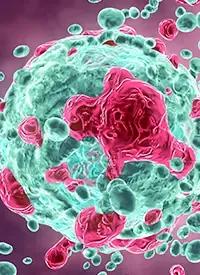Article
Treatment Should Not Be Dependent on Age in Soft Tissue Sarcoma
Author(s):
Soft tissue sarcoma was the primary cause of death in patients over the age of 75 years, indicating that age alone should not be a prohibitive factor for treatment in older patients, according to findings from a retrospective analysis that was presented at the 2021 ESMO Congress.

Soft tissue sarcoma was the primary cause of death in patients over the age of 75 years, indicating that age alone should not be a prohibitive factor for treatment in older patients, according to findings from a retrospective analysis that was presented at the 2021 ESMO Congress.1
At a median follow-up of 48 months (95% CI, 42-57), the median overall survival was 47 months (95% CI, 42-62); 45% of patients (n = 108) experienced disease recurrence. The median disease-free survival was 27.5 months (range, 19-43); 26% of patients had a distant recurrence, predominantly in the lungs.
Sixty-nine patients received treatment for disease recurrence, most commonly anthracycline-based chemotherapy (n = 35); 24 patients underwent surgery with curative intent. The estimated 4-year death of disease rate was 37%, and the estimated 4-year death of other causes rate was 14%.
Regarding treatment, 6% of patients (n = 15) received adjuvant chemotherapy, one-third of whom had been diagnosed with angiosarcoma, and 73% of patients received adjuvant radiotherapy. Most patients (85%) had an R0 resection. Ten patients required limb amputation, and 110 patients died (death of disease, n = 82; death of other causes, n = 28).
“Soft tissue sarcoma is the main cause of death in older patients. Therefore, age as an only factor should not limit treatment. Disease stage was associated with death of other causes. Thus, not all adjuvant treatment options can be used in the context of the frailty of older patients. In the case of disease recurrence, salvage therapy is less often feasible compared with a younger population,” wrote Hanna Kosela-Paterczyk, MD, of the Department of Soft Tissue/Bone Sarcoma and Melanoma, Maria Sklodowska-Curie National Research Institute of Oncology, in Warsaw, Poland, and coauthors, in the poster.
Older patients comprise most patients with soft tissue sarcoma. Additional consideration, which should be given to coexisting diseases, may prevent the use of aggressive treatment, such as chemotherapy.
To better understand the outcomes of older patients with soft tissue sarcoma, investigators compiled data on patients over the age of 75 years treated with radical intent.
A total of 237 patients who had been diagnosed with locally advanced soft tissue sarcoma and treated between 2012 and 2019 were included in the analysis; most patients were male (51%).
Patients were a mean age of 80 years (standard deviation, 4); 46% of patients had at least 3 comorbidities.
The most common types of sarcoma were pleomorphic sarcoma (28%), liposarcoma (23%), myxofibrosarcoma (19%), and leiomyosarcoma (15%). A total of 59% of patients had primary tumors, 30% had a local recurrence, and the remaining patients had a scar resection after prior treatment.
The mean tumor size was 10 cm; 73% of patients had high-grade tumors. The most common tumor localization was in the lower limbs (50%).
Additional findings reflected the association between key variables for death of disease and death of other causes. The breakdown for age, change in tumor size, and tumor grade as predictors for death of disease were as follows:
- Age (HR, 1.11; 95% CI, 1.06-1.16; P < .001)
- Male vs female sex (HR, 0.65; 95% CI, 0.43-0.98; P = .04)
- More than 2 vs 2 or fewer comorbidities (HR, 0.89; 95% CI, 0.6-1.32; P = .561)
- Change in tumor size per 1 cm (HR, 1.04; 95% CI, 1.02-1.06; P < .001)
- High vs low tumor grade (HR, 2.54; 95% CI, 1.34-4.81; P = .004)
The breakdown for sex, number of comorbidities, change in tumor size, and tumor grade as predictors for death of other causes were the following:
- Age (HR, 0.94; 95% CI, 0.85-1.03; P = .173)
- Male vs female sex (HR, 2.98; 95% CI, 1.25-7.07; P = .013)
- More than 2 vs 2 or fewer comorbidities (HR, 1.65; 95% CI, 0.78-3.5; P = .191)
- Change in tumor size per 1 cm (HR, 1.05; 95% CI, 1.01-1.1; P = .019)
- High vs low tumor grade (HR, 2.07; 95% CI, 0.68-6.29; P = .201).
Reference
- Paterczyk HK, Teterycz P, Kozak K, et al. Treatment results in elderly patients diagnosed with locally advanced soft tissue sarcoma (STS). Presented at: 2021 ESMO Congress; September 16-21, 2021; virtual. Poster 1529P.








